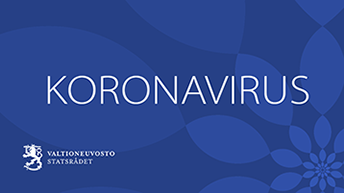Contact teaching commences on Thursday 14 May

Children in early childhood education and care and in primary and lower secondary school will return to contact teaching on Thursday 14 May. The Government decided to lift the restrictions on early childhood education and care and on primary and lower secondary education on 29 April. Based on an epidemiological assessment, there are no longer grounds for extending the Decree on the Application of the Emergency Powers Act and it is safe to return to school. The Ministry of Education and Culture and the Finnish Institute for Health and Welfare have clarified and specified the instructions given to education providers on 4 May.
The purpose of the instructions given to education providers is to support schools and early childhood education units in organising the return to school. By following the instructions, the risk of infection in connection with school and early childhood education and care is reduced and it is safe for schoolchildren and staff to return to contact teaching.
Avoid close physical contact
Situations in which people are in direct physical contact with one another are to be avoided in schools and early childhood education and care. This means that big events are not to be organised and, apart from children and staff members, outsiders should not spend time in or around schools and early childhood education centres and their surrounding areas. Each unit establishes practices that suit their own situation the best and instructs families to act accordingly. Staff members must also avoid getting together, which means that teachers should hold their meetings primarily remotely, for example.
Under the Assembly Act, activities in school or early childhood education and care do not constitute a general meeting or public event. The activities are not subject to any restrictions on assembly. The regulations on group sizes and staffing sizes are in force as enacted in the legislation on early childhood education and care and on basic education.
Spacious arrangements
Staff members in early childhood education and care should work with one and the same group of children. There will be no regulations on safety intervals between individuals and groups do not need to be split up; instead, spaces can be arranged more spaciously. As a rule, to prevent the spread of infections staff members should not move from one unit to another.
Schools are to arrange their spaces in such a way that there are fewer students in the same space than normally. If necessary, empty teaching facilities (e.g. upper secondary schools) can be used for this purpose.
In primary schools, the different teaching groups are to be kept separate throughout the school day. In lower secondary schools and in optional subjects, the teaching groups may change if the teaching cannot be organised any other way. If keeping teaching groups separate is impossible in secondary schools, for example, effort should be made to create spaciousness and to stagger teaching as far as possible.
School meals are to the arranged individually with the students’ own class or group; no joint meals in the lunchroom. However, the lunchroom can be used in turns in stages.
Risk groups taken into account
Cases of severe COVID-19 are very rare in children and the risk of severe cases has not risen in healthy children and adolescents or those whose underlying health condition is under therapeutic control. In the case of a child or a family member with a severe underlying condition or who needs regular medication that compromises defence mechanisms, the attending doctor assesses whether the child can return to school or early childhood education. For those working in schools and early childhood education, the measures are based on a risk assessment carried out by the employer. Occupational healthcare supports the employer in the risk assessment.
Do not go to school or early childhood education when ill
It is also important to remember that no child or adult should attend school or early childhood education and care when sick. If a child becomes ill during the day, the child must be immediately transferred to a separate space accompanied by an adult to wait for the arrival of the parent. Adults must avoid close contact with the sick child by maintaining sufficient physical distance. Those infected with COVID-19 must be away from school or early childhood education and care for at least seven days from the onset of symptoms, but for a longer period, if necessary, so that they have been asymptomatic for at least two days before returning to school or early childhood education and care. Since COVID-19 is primarily transmitted through droplets, proper cough and hand hygiene practices prevent infections.
Possible infections
The physician responsible for infectious diseases in the municipality or hospital district is in charge of investigating transmission chains. If someone in school or early childhood education and care is diagnosed with COVID-19, it will be investigated whether others have been exposed to it, and the exposed must be tracked down and quarantined for 14 days.
Inquiries
Eeva-Riitta Pirhonen, Director General, tel. +358 40 576 9462, Ministry of Education and Culture
Anne-Marie Brisson, Senior Ministerial Adviser, tel. +358 400 269 201, Ministry of Education and Culture
Otto Helve, Medical Adviser, tel. +358 29 524 7711, Finnish Institute for Health and Welfare
Emmi Sarvikivi, Medical Adviser, tel. +358 29 524 7105, Finnish Institute for Health and Welfare

